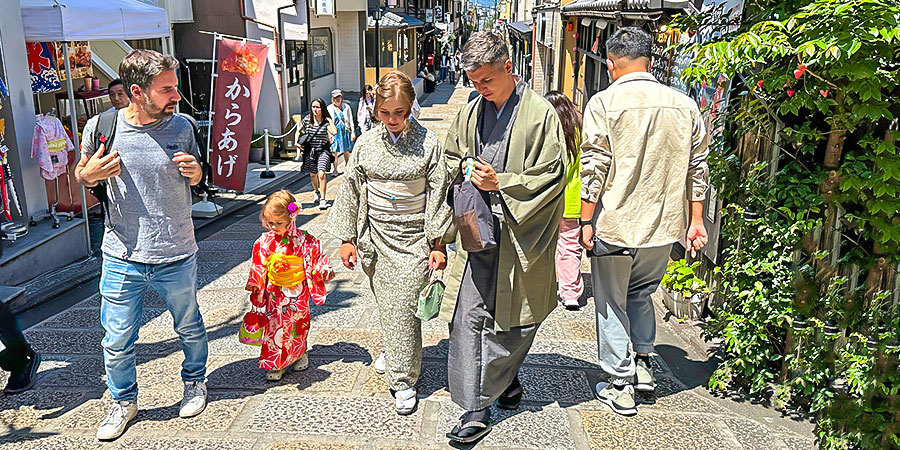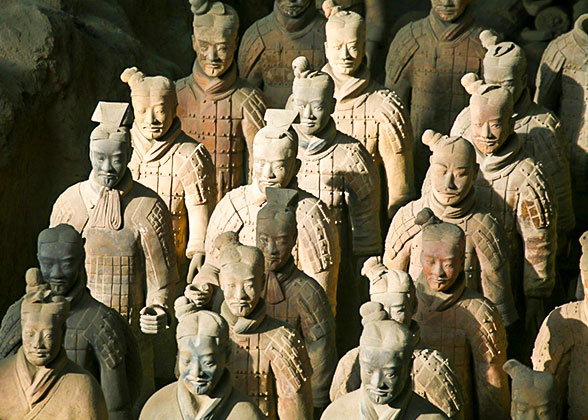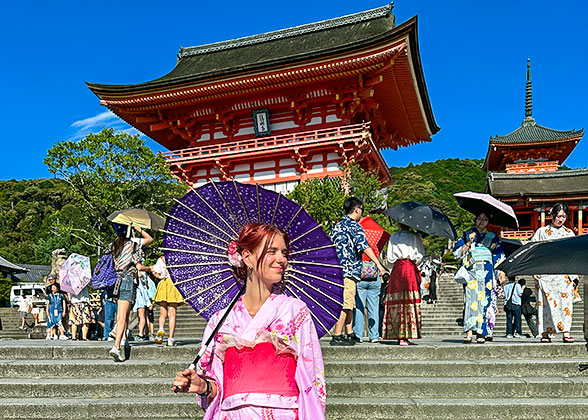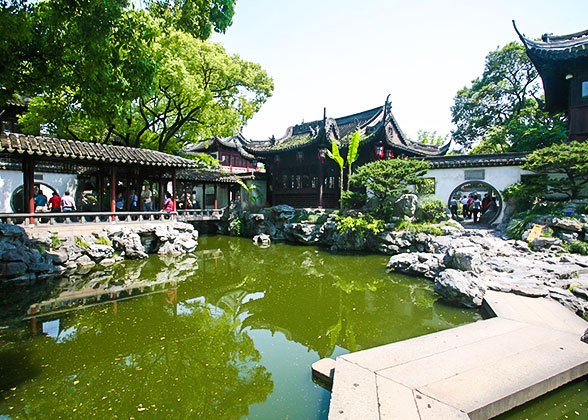An In-Depth Comparison between China’s Tourism and Japan’s Tourism
As hot destinations in Asia, which is more popular or cost-effective, China or Japan?Western Visitors love to Travel to China, But You May See More Westerners in Japan.
According to the governmental statics, western travelers from Europe & North America prefer to China in terms of the number, which is generally much more than that to Japan. However, it’s striking to see crowds of westerners at the best-known attractions around Japan, such as Sensoji Temple in Tokyo.

Westerners Travel to Kyoto
|
That’s probably because attractions gather together geographically or are not far away from each other in Japan, while China is extremely vast. It’s approximately 24 times larger than Japan’s area, and attractions scatter all over the land. Likewise, western visitors to China are dispersed across the country, but visitors to Japan often are centered in a few regions especially in the cities.
Even so, it’s estimated that the total number of foreign travelers to Japan may exceed those to China throughout the year 2024. One of the reasons is, many foreign travelers think it is a sticky business to cope with the reservation and online payment systems flourished in the epidemic era in China.
The Majority of Foreign Travelers to Japan & China Come from Asia.
Asian tourists make up the majority of inbound visitors to both the two countries. In particular, the share of Asian travelers is overwhelming among those to Japan, reaching 80% in the first half of year 2024. Although China receives numerous Asian travelers as well, the proportion is magnificently lower, which is just more than 60% overall.

Visitors on Xi'an City Wall
|
Lower Cost to Travel to China
Compared with Japan, China is completely a budget-friendly destination for travelers. The cost for travelling to Japan may be at least twice to China. On hotels, food and transportation, etc., almost everything is expensive in Japan. To China, you may expense USD 60-80 per day on an independent tour, while the everyday expense could reach USD 150-200 when travelling by yourself to Japan.Condition of Accommodation in China & Japan
In the cities, the conditions of accommodation are similar in China and Japan. There are 3-star, 4-star, and 5-star hotels in the big cities, cheaper youth hostels or capsule hotels are available as well.Even so, the difference is:
|
|
|
The Weather & Best Time to Visit in Two Countries
As two neighboring countries in East Asia, most-visited eastern part of China and Japan hold the similar climate, with four distinctive seasons. Japan is more humid, surrounded by sea.Spring (March - May) and autumn (September - November) are the best seasons for sightseeing in the two countries, as the weather is relatively mild. The summer is fervent and the winter is frigid. In Japan, cherry blossom viewing is greatly popular in late March and early April, which is the distinctiveness of Japan.
See Also:
![]() Japan Weather & Best Time to Visit Japan
Japan Weather & Best Time to Visit Japan
|
|
|
Transportation in Two Countries
Both Japan and China are famed for the bullet trains and the punctual system. Particularly, each means of transportation is punctual in Japan.Bullet train is the major travel mode for a long-distance journey apart from flights. Called Shinkansen in Japan, the bullet train can take you to all major tourist cities; but the price is expensive, more than twice the price of China’s high-speed train.
|
|
|
Well-developed public transportation in Japan and China make it easy to travel around. However, it is very economical in China to travel via the public transport; while it’s pretty expensive in Japan, especially taxis.
Language Barriers in Japan & China

Expensive Taxi in Japan
|
Comparatively speaking, Japan provides a better service to cope with the language barrier. At attractions, transportation hubs like an airport or even metro station, and more spots, the staff take a translator with them or use the translation app in their phone/tablet, to deal with the possible language barriers at any time.
![]() See Details: Is There a Big Language Barrier in Japan?
See Details: Is There a Big Language Barrier in Japan?
Chinese Food VS Japanese Food
As you may know, Chinese like fry food with oil and sauce, and the dishes are usually matched with noodles or rice. Hot pot, dumplings, Peking Roast Duck, etc. are popular among oversea visitors. In metropolises, you could discover the authentic yummy food in various styles at restaurants and chain snack bars. Meanwhile, food in China is much cheaper compared to that in Japan.Although Japanese fry food too, they use less sauce and oil. Japanese adore seafood and love to eat raw ingredients. Sashimi, sliced raw fishes, is the typical Japan food. Sushi and many fish dishes are also their favorites. In the konbini - convenience stores, many instant food are also offered.
|
|
|
China & Japan Provide High-Quality Services for Oversea Visitors.
There is no big difference overall in the services provided for oversea travelers in China and Japan. Barrier-free facilities, facilities of accommodation, transportation, information services, dining services, health care, shopping, etc. are all installed and well applied, especially at the well-known attractions. Servicers could respond the visitors’ demands/needs in time, including issues in booking, chartering bus, or taking public transport, etc. Personalized service is taken more and more seriously, too. Special seats and articles are also offered in restaurants and more venues, luggage depository is available at many attractions, stations, etc.

Osaka Night Scene
|
Obviously, informationalized service develops fast in China. Travelers can book the tickets online, look up the real-time information of buses, find the electronic map at an attraction, etc.
In addition, Japanese show a higher level of politeness. Their politeness seems to have been standardized, as they would welcome and say goodbye to every visitor when someone step into/out their restaurant, store, attraction, etc. No matter what they are thinking, they are polite outwardly. In contrast, due to lack of unified standards, the quality of services is relatively uneven around China.

The Bund, Shanghai
|
Over Tourism & Foreign Travelers to China & Japan
It is real of over tourism in China and Japan, as it’s very evident in the best-known attractions, for the crowds make visitors spend more time in queuing and waiting, and also cause traffic jams. Such a situation mainly arises in the major tourist cities and hottest attractions, such as Tokyo & Osaka in Japan, and Beijing, Shanghai & West Lake in China.
|
|
|
In Japan, more oversea travelers induce the crowding situation, while the natives are less. On the contrary, if an attraction/city is full of visitors in China, especially during some holidays in the country like National Day in early October, there are mostly Chinese natives.
Furthermore, both Japan and China are safe for travelling. Local customs, interesting traditional festivals, and more in the oriental nations could catch the eyes of travelers.




